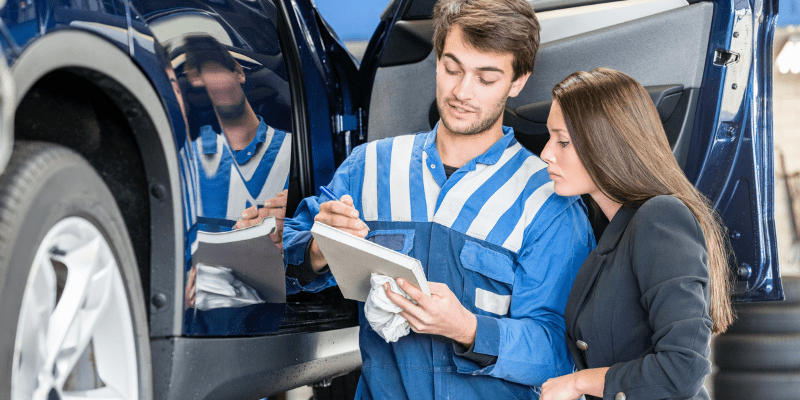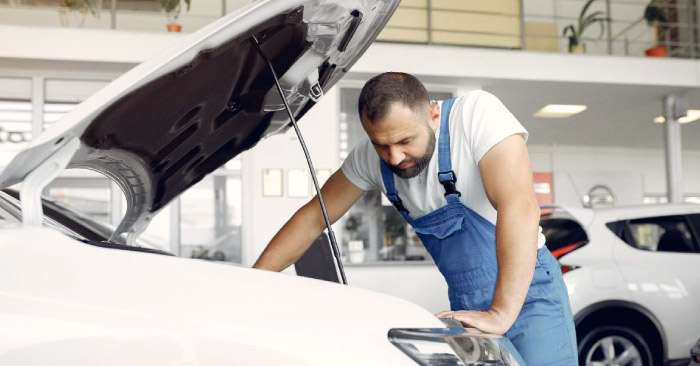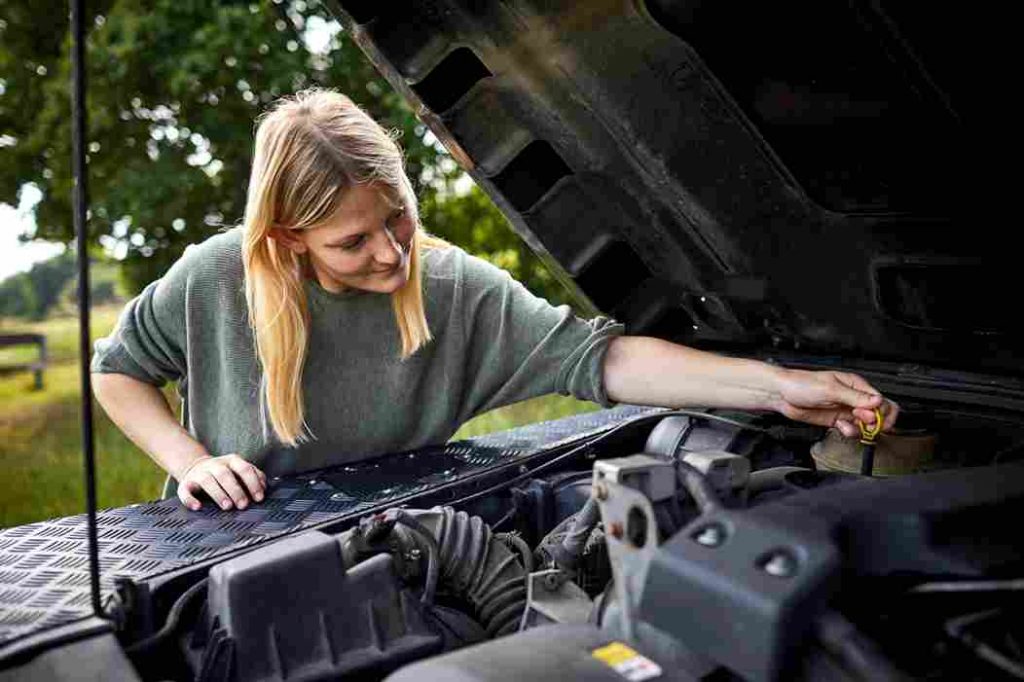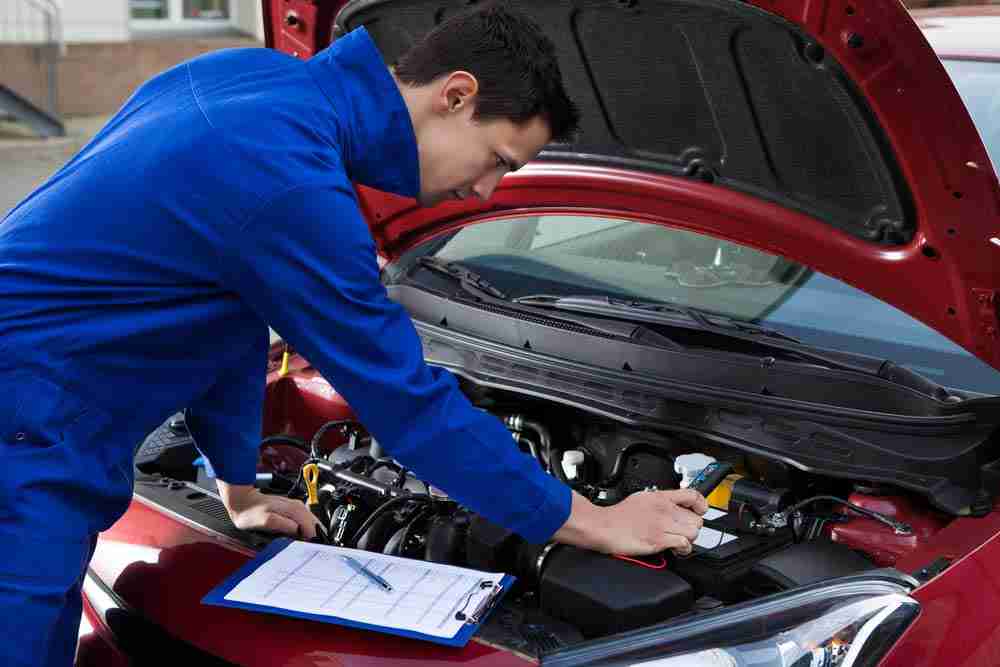Car maintenance is an important part of keeping your vehicle running smoothly. Regularly checking and replacing fluids, filters, and spark plugs can help you avoid costly repairs down the road.
In this complete car maintenance checklist, we provide you with everything you need to keep your car running like new.
Car Maintenance is important
If you own a car, then it’s important to keep it in good condition. Regular maintenance can help prevent costly repairs and ensure your car runs smoothly. Below is a complete car maintenance checklist to get you started.
Change the oil every 3,000 miles. This is one of the most important things you can do for your car. Not only will it keep your engine running smoothly, but it will also protect its pistons, rings, and valves.
Change the filter every 6 months or 12,000 miles. A dirty filter will affect the performance of your car’s engine. Check fluid levels and add fluid if needed.
Make sure all the fluid levels are correct and add additional fluid as needed. Check brakes and tires Make sure all the brakes are working properly and that there is enough air in the tires. Check lights and signals.
Make sure all lights and signals are working properly. Make sure all fluids are at the proper levels
Detailing your car
A car’s exterior is important, but so is its interior. Regular detailing can make your ride look and smell great, saving you money in the long run. Here’s a complete car maintenance checklist to help keep your vehicle running smoothly:
Wash your windows and exterior regularly. This will remove pollen, dust, and other allergens that can build up over time and cause water streaks or foggy windows.
Check fluid levels and top off as needed. Engine oil, transmission fluid, brake fluid, and power steering fluid all need to be at the correct level for optimal performance.
Check the tire pressure regularly and correct any low readings as needed. Overinflating tires can lead to excessive wear and tear on your wheels and suspension, as well as dangerous driving conditions.
Inspect headlights, taillights, windshield wipers, turn signals, brake lights, and License Plate Lights (LPLs) for damage or malfunction.
Check the charging system; if there are problems with it, have it repaired or replaced.
Clean the inside of your headlights by using a gentle cleaner and a soft cloth; replace any broken or cracked lightbulbs.
Checking fluid levels
If you’re like most drivers, you probably don’t think much about checking your fluid levels. However, doing a basic check can help keep your car running smoothly and avoid costly repairs.
Fluid levels in your car can be checked using a dipstick or a hydrometer. Here’s a complete car maintenance checklist to help you check your fluid levels:
1. Check the fluid level in the engine oil and transmission fluid.
2. Check the level of the differential, front and rear axle fluids, brake fluid, and steering fluid.
3. Check the level in the cooling system (antifreeze, water, radiator coolant) and power steering reservoir.
4. Test the clutch pedal feel and adjust as needed.
5. Check for leaks at gaskets, hoses, and joints; replace as necessary.
Checking brakes
The Brake system should be checked for leaks and wear. Brakes should also be tested for mud, snow, or ice buildup.
Inspecting tires and rims
It can be a hassle to schedule an appointment with your mechanic, but it’s important to keep your car in good working order. Here is a checklist of things you can do to inspect your vehicle’s tires and rims.
1. Check the tire pressure. Make sure all four tires are at the manufacturer’s recommended pressure. Over-inflating tires will wear out faster and could even create dangerous conditions on the road.
2. Inspect the condition of the tire tread. Look for cracks in the rubber, bald patches, or any other signs that the tire is about to go flat. Replace tires that show significant damage.
3. Inspect the condition of the rim. Look for dents, rust, or any other signs of wear and tear. If there are any problems with the rim, have it replaced immediately.
Checking engine oil and coolant
Regularly checking engine oil and coolant is one of the most basic steps you can take to keep your car running smoothly. Checking both levels regularly will help prevent engine wear and other problems.
To check your engine oil, first, remove the car’s dipstick. To do this, remove the cap on the end of the dipstick and pull it out.
Be sure to hold onto the wire frame that holds the dipstick in place you’ll need it to replace the oil. Pour a few drops of oil on top of the piston and wait a few minutes for it to spread through the engine. If there are any visible leaks, you’ll need to change your oil soon.
To check your coolant, fill a small container with water and put it in the trunk or behind the seat. Close all of the doors and windows, then start your car.
Watch the temperature gauge – if it gets too hot, your coolant is probably low. If it doesn’t get too hot, check again in an hour or so. If it still seems low, go ahead and replace the coolant.
Checking lights and blinkers
When it comes to your car, it’s important to make sure all the lights and blinkers are working properly. Checking these items can help you know when there might be a problem with your vehicle.
Here is a checklist of some common lights and blinkers:
1. Headlights: Make sure the headlights are working by turning them on and checking for a bright light at the front of the car. If there is a problem, turn off the headlights and check to see if they’re still functioning by shining a light through them.
2. Turn signals: Check that the turn signals are blinking by turning on your hazard lights and then turning on your turn signal. They should both light up and then go out together after about two seconds. If one or both of them doesn’t work, replace them.
3. Brake lights: Make sure the brake lights are working by pressing down on the brake pedal and then turning on the hazard lights. They should both light up and stay lit until you release the brake pedal. If they don’t work, replace them.
4. Headlight beams: To check that your headlights are brightly shining.
Testing power windows, locks, and mirrors
Adding power windows, locks, and mirrors to your car’s maintenance checklist is a great way to keep your vehicle safe and secure in the event of a theft. Make sure to test each system regularly to ensure that they are working properly.
Testing air conditioning
Testing the air conditioning is an important part of car maintenance. Make sure to check the temperature inside and outside the car, the operation of the A/C compressor, and the levels of air pollutants.
Testing horn and warning lights
If your car has a horn and warning lights, check to see if they are working. Test the horn by pressing the button and listening for the sound it makes. Test the warning lights by turning them on and off. If one or more of the warning lights don’t work, take your car to a mechanic to have it checked out.
Conclusion
Thank you for reading our comprehensive car maintenance checklist. By following this list, you will be able to keep your car in top condition and avoid any costly repairs down the road.
Whether your car is a few years old or 10 years old, following these tips will ensure that you keep it running like new. Do you have any questions about our checklist? Let us know in the comments below.
FAQ
Why is regular car maintenance important?
Regular car maintenance is crucial for several reasons. It ensures the longevity of your vehicle, promotes better fuel efficiency, reduces the risk of unexpected breakdowns, keeps the car’s value higher for resale, and most importantly, ensures the safety of the driver, passengers, and others on the road.
How often should you change my car’s oil?
The frequency varies based on the type of oil you use and your car’s make and model. Typically, conventional oil should be changed every 3,000 to 5,000 miles, while synthetic oil can last between 7,500 to 10,000 miles. However, always refer to your vehicle’s owner’s manual for manufacturer-specific recommendations.
When should you replace the air filter in my car?
For most vehicles, it’s advisable to replace the air filter every 12,000 to 15,000 miles. However, if you drive in dusty or polluted conditions frequently, you might need to change it more often. Check your owner’s manual for specific guidelines related to your car model.
How can you tell if your brakes need servicing or replacing?
Some common signs include a squeaking or grinding noise when braking, a vibrating steering wheel, longer stopping distances, or a brake warning light on the dashboard. If you notice any of these, it’s a good idea to have your brakes inspected by a professional.
Why is your check engine light on?
The check engine light can come on for a multitude of reasons, from a loose gas cap to more severe issues like a malfunctioning oxygen sensor or problems with the catalytic converter. It’s best to get a diagnostic check to pinpoint the exact issue.
How often should you rotate your tires and why is it necessary?
It’s typically recommended to rotate your tires every 6,000 to 8,000 miles. Rotating the tires ensures even tire wear, which can prolong the life of the tires, improve gas mileage, and ensure that your car handles in a steady and predictable manner, especially when turning.
When should you replace my car’s battery?
Car batteries usually last about 3 to 5 years, but this can vary based on factors like the quality of the battery, driving conditions, and how often you drive. If your car has trouble starting, the lights appear dimmer, or the electrical components aren’t working efficiently, it may be time to check or replace the battery.
How can you maintain your car’s paint and exterior finish?
Regularly washing your car can help remove dirt, salt, and other contaminants. Applying a quality wax or sealant can provide a protective layer against UV rays, bird droppings, tree sap, and other environmental threats. Avoid parking under direct sunlight for prolonged periods and consider using a car cover if you don’t have a garage.
Read also:



